

The Ultimate Cupcake Guide. Cupcakes have proven themselves to be much more than a fleeting baking trend.

With the amount of cupcake bakeries, reality television shows, and recipes in general, it’s clear they’re here to stay. Cupcakes are much easier than layered cakes to bake and transport, not to mention their cute size makes them the perfect indulgence for just about any occasion or holiday, like Halloween! It’s no wonder they’re so popular. Despite their popularity, many cupcakes you find at the grocery store bakery are either bland or cloyingly sweet. Not to mention so many have an awful crumbly or greasy texture and artificial aftertaste. For this round of kitchen experimenting, I tested six batches of cupcakes to discover what makes a cupcake domed or flat, rich or crumbly, soft or slightly chewy, to help you create your version of the perfect cupcake.
Control Recipe By Tessa Arias, Handle the Heat Yield: 12 cupcakes Prep Time: 10 min Cook: 50 min Ingredients Directions. Ultimate Guide to Muffins. Ultimate Guide to Muffins tests out small variations in 8 batches of muffins to discover exactly what makes muffins moist, tender, dry, crumbly, or tall!
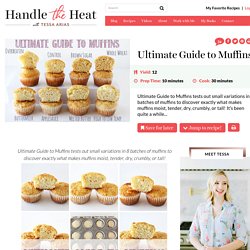
It’s been quite a while since I’ve created a new Ultimate Guide post so I figured it was time to get experimenting and make another huge mess in my kitchen in pursuit of recipe perfection! I do these posts, which may make me seem like a lunatic baker to anyone watching, because I think that actually seeing and reading about how a single ingredient or technique can impact a baking recipe is SO immensely helpful. Based off your feedback, it seems like you guys find these posts helpful too! I believe everyone should be able to create their ultimate version of any recipe, that baking shouldn’t be a source of confusion or frustration, and I want to help you by sharing my experiments. So today I’m diving into the magnificent world of muffins.
Tools and Ingredients Used: Control Recipe Recipe By Tessa Arias, Handle the Heat Yield: 12 Ingredients. Are you keeping it fresh? Today we have another post in our new series… the Tip of the Week!
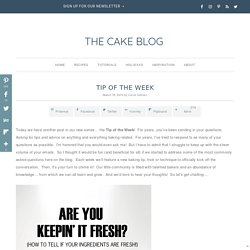
For years, you’ve been sending in your questions. Asking for tips and advice on anything and everything baking related. Does Sifting Make a Better Cake? Our contributor, Summer Stone of Cake Paper Party, is back today with a new baking science experiment.

The Best Cakes Start at Room Temperature. Today we’re starting a new weekly series!
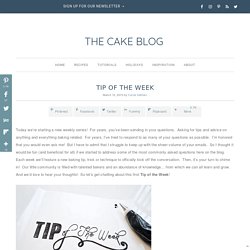
For years, you’ve been sending in your questions. How To Build a Cake Like a Pro. Decorating a cake is sort of like solving a puzzle.
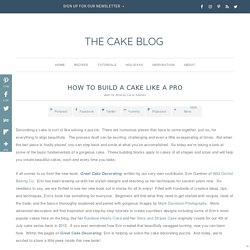
There are numerous pieces that have to come together, just so, for everything to align beautifully. The process itself can be exciting, challenging and even a little exasperating at times. Cooking Conversions and Equivalents. Pan Sizes. Pan Dimensions and Volumes.
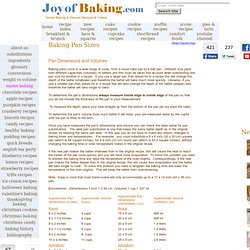
The Ultimate Guide to Measuring. The most foolproof path to baking success is to measure accurately.
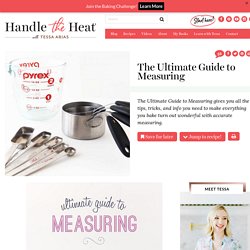
I get dozens of comments every week asking why a baking recipe didn’t turn out properly, and I’d say half the time it’s likely due to inaccurate measuring. Baking is a science where precision is rewarded in perfectly delicious treats. U.S./Metric Volume Equivalents. Weight Vs.Volume Measurement - Joyofbaking.com *Demo Video*
As you know, baking is about precision and accuracy and that's why I've always been an advocate of weight measurements.
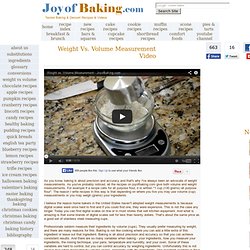
As you've probably noticed, all the recipes on joyofbaking.com give both volume and weight measurements. For example if a recipe calls for all purpose flour, it is written "1 cup (130 grams) all purpose flour". The reason I write recipes in this way is that depending on where you live you may use volume (cup) measurements or you may weigh (grams) your ingredients. I believe the reason home bakers in the United States haven't adopted weight measurements is because digital scales were once hard to find and if you could find one, they were expensive.
This is not the case any longer. Professionals seldom measure their ingredients by volume (cups). Weighing ingredients is about accuracy, but it's also makes things quicker and easier. Ingredient Substitution. Contact Us Privacy Policy Joyofbaking On Twitter Stephanie Jaworski+ Find us on Google+ Use of materials on all pages on the domains Joyofbaking.com, joyofbaking.mobi, the Joyofbaking.com Facebook Page, @joyofbaking on Twitter, the Joyofbaking.com RSS Feed, the Joyofbaking.com email list the Joyofbaking1 YouTube Channel and any emails sent from @joyofbaking.com are entirely at the risk of the user and their owner, iFood Media LLC will not be responsible for any damages directly or indirectly resulting from the use.
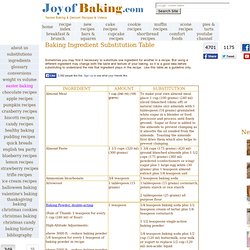
References cited may include a link to purchase the referenced book on Amazon.com. This website and the contents are not endorsed or sponsored by the owner of the "Joy of Cooking" series of books or its publisher Simon & Schuster, Inc. Content in any form may not be copied or used without written permission of Stephanie Jaworski, Joyofbaking.com. Ultimate guide Archives. The Difference Between Baking Soda and Baking Powder. Almost every cook has faced this scenario: you’re following a recipe that requires baking powder but you only have baking soda. What do you do? Can you substitute? Or this one: you haven’t baked for a while, you make a favorite biscuit and use baking powder, only to find that your biscuits bake up flat as hockey pucks.
What went wrong? Baking soda and baking powder are both leaveners used in baking, but they are chemically different. Layer cake tips + the biggest birthday cake yet. My father-in-law, youthful guy that he is, turned 60 this past weekend and if you think I was going to allow my in-laws to purchase him a cake from a bakery, oh, you don’t know how even typing those words caused the shudder to rise up in my chest. A bakery cake! Promise me if I make it to 60, I get a homemade cake too. I hope to have leveraged enough cake-baking karma by then to not even have to ask.
But this isn’t about my father-in-law’s birthday cake, or not entirely. (But you’ll see the recipe later, you know, just in case you ever want to make your own 12-inch square insanely chocolaty cake.) 10 Tips for Better Layer Cakes 1. 2. 3. 4. 5. 6. 7. 8. 9. Layer Cake 101 — Style Sweet CA. My TOP TOOLS for Layer Cake Success: Cake Pans: I bake 90% of my cakes in 6 and 8-inch round cake pans (and consequently the recipes you will find on this blog and in my book will match).
Occasionally I will use 7 and 10-inch round pans, bundt and, and sheet pans (where cakes are either cut into squares or cut out using a cake ring). Piping Basics.